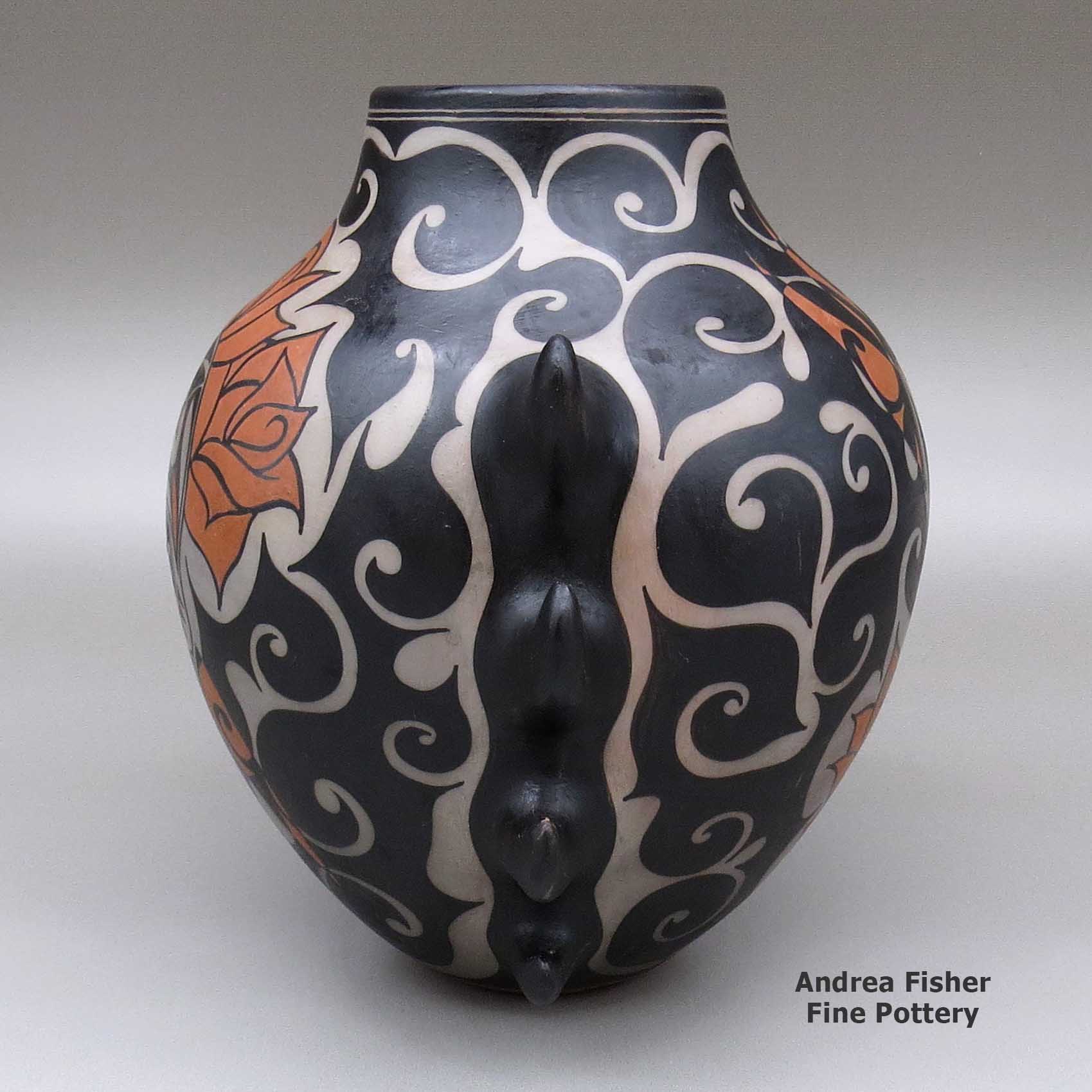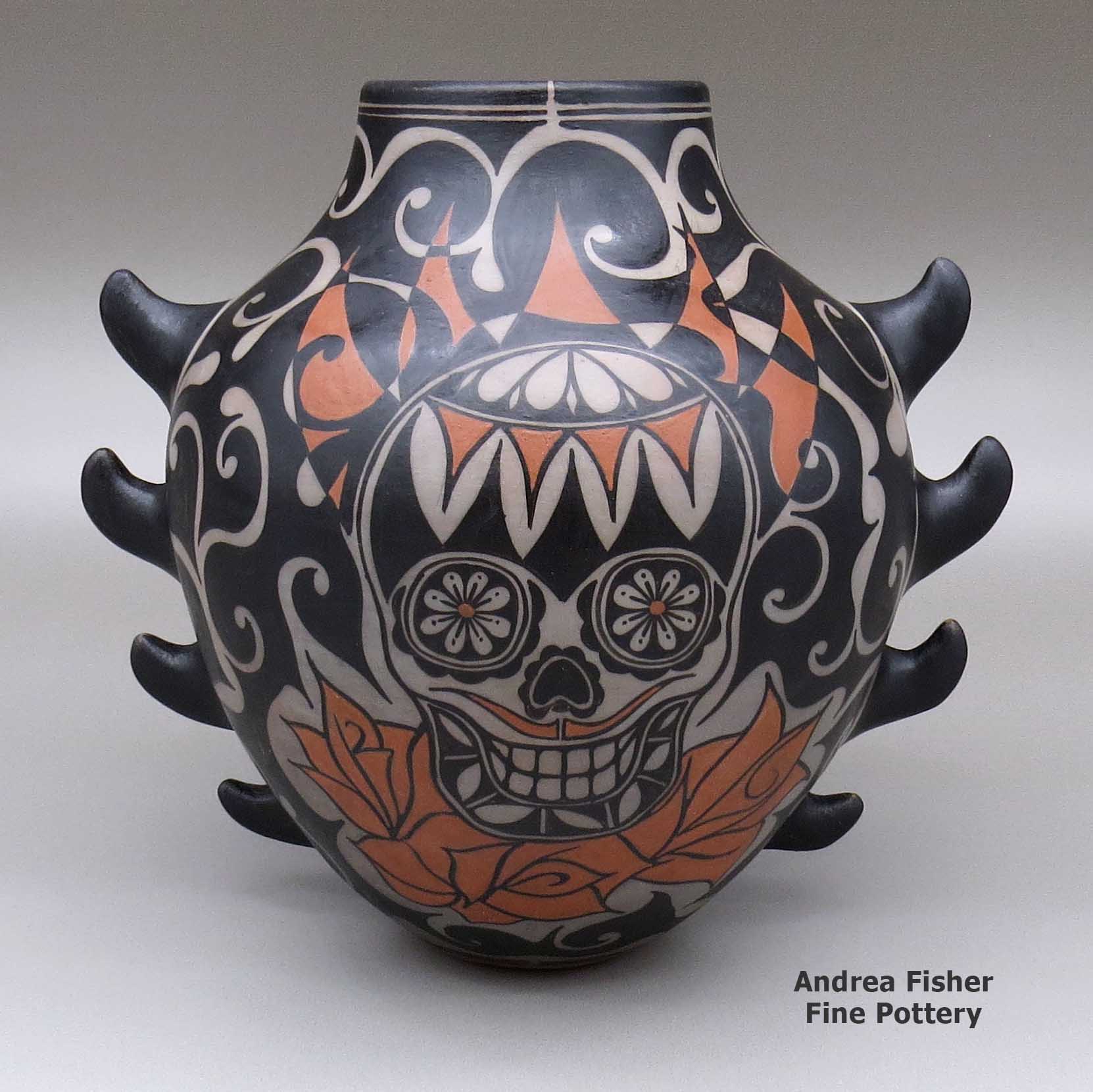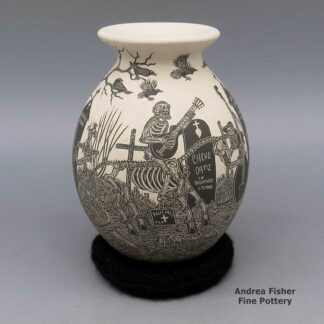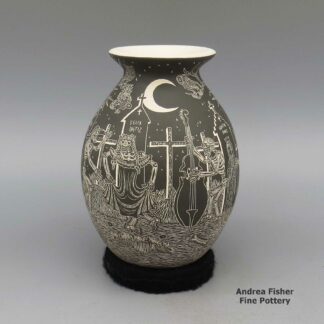| Dimensions | 7.75 × 10 × 9.75 in |
|---|---|
| Signature | Lisa Holt Cochiti Harlan Reano Santo Domingo NM |
| Date Born | 2023 |
Lisa Holt, zzco3a230, Polychrome jar with pointed appliques and a painted skull, flower, and geometric design
$3,950.00
A polychrome jar with pointed appliques on the sides and decorated with a painted Day of the Dead sugar skull, flower and geometric design
In stock
A Short History of Cochiti Pueblo
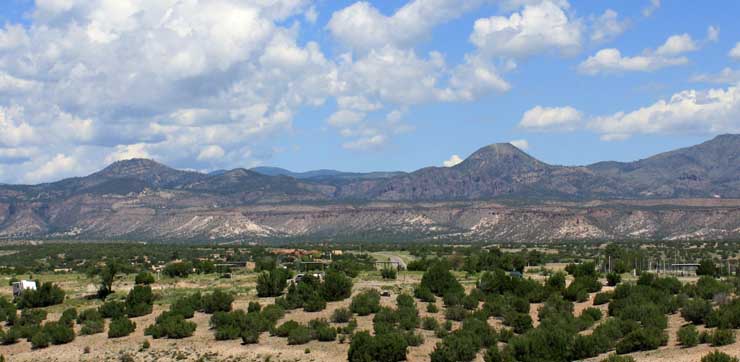
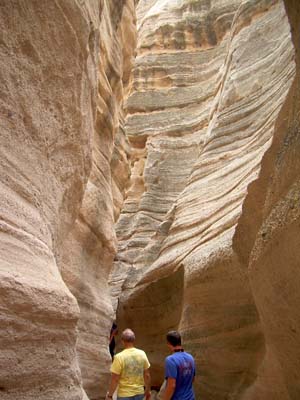
Cochiti Pueblo lies fifteen miles south of Santa Fe along the west bank of the Rio Grande. What is now Bandelier National Monument is the pueblo's most recent ancestral home. They may have relocated to the Bandelier area from the Four Corners region around 1300, and then closer to the Rio Grande in the 1400s in the heart of an even worse drought situation. They merged with people who had been living in the area for hundreds of years before, pushing south until they came up against the countryside of the Tiwa pueblos in the middle Rio Grande.
In those days, the people of Cochiti, Santo Domingo and San Felipe were one Keres-speaking culture. They split into three cultures when some decided to go further down the Rio Grande to settle (San Felipe), and some decided to cross to the eastern side (Santo Domingo). All three speak dialects of Eastern Keres and are considered very conservative.
Cochiti legend says that Clay Old Woman and Clay Old Man came to visit the Cochitis. While all the people watched, Clay Old Woman shaped a pot. Clay Old Man danced too close and kicked the pot. He rolled the clay from the broken pot into a ball, gave a piece to all the women in the village and told them never to forget to make pottery.
Most outsiders who visit Cochiti Pueblo these days do so on the way to or from either the recreation area on Cochiti Lake or Kasha-Katuwe Tent Rocks National Monument.

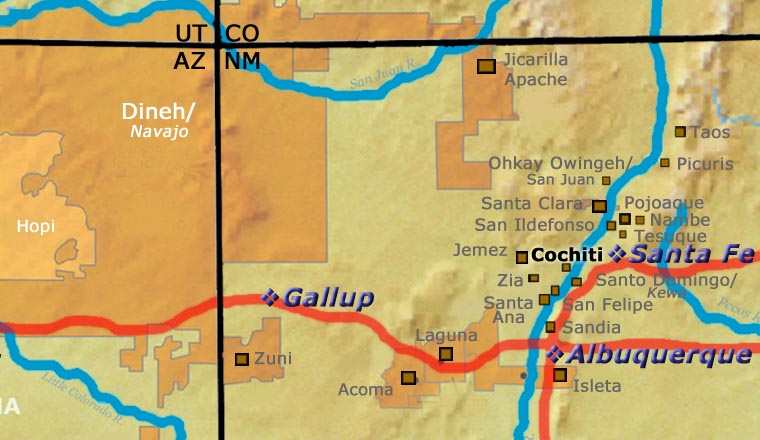
For more info:
Cochiti Pueblo at Wikipedia
Pueblo of Cochiti official website
About Jars
The jar is a basic utilitarian shape, a container generally for cooking food, storing grain or for carrying and storing water. The jar's outer surface is a canvas where potters have been expressing their religious visions and stories for centuries.
In Sinagua pueblos (in northern Arizona), the people made very large jars and buried them up to their openings in the floors of the hidden-most rooms in their pueblo. They kept those jars filled with water but also kept smaller jars of meat and other perishables inside those jars in the water. It's a form of refrigeration still in use among indigenous people around the world.
Where bowls tend to be low, wide and with large openings, jars tend to be more globular: taller, less wide and with smaller openings.
For a potter looking at decorating her piece, bowls are often decorated inside and out while most jars are decorated only on the outside. Jars have a natural continuity to their design surface where bowls have a natural break at the rim, effectively yielding two design surfaces on which separate or complimentary stories can be told.
Before the mid-1800s, storage jars tended to be quite large. Cooking jars and water jars varied in size depending on how many people they were designed to serve. Then came American traders with enameled metal cookware, ceramic dishes and metal eating utensils...Some pueblos embraced those traders immediately while others took several generations to let them and their innovations in. Either way, opening those doors led to the virtual collapse of utilitarian pottery-making in most pueblos by the early 1900s.
In the 1920s there was a marked shift away from the machinations of individual traders and more toward marketing Native American pottery as an artform. Maria Martinez was becoming known through her exhibitions at various major industrial fairs around the country and Nampeyo of Hano was demonstrating her art for the Fred Harvey Company at the Grand Canyon. The first few years of the Santa Fe Indian Market helped to solidify that movement and propel it forward. It took another couple generations of artists to open other venues for their art across the country and turn Native American art into the phenomenon it has become.
Today's jars are artwork, not at all for utilitarian purposes, and their shapes, sizes and decorations have evolved to reflect that shift.
Day/Night of the Dead
The Day of the Dead, El Dia de los Muertos, is a holiday celebrated in Mexico. Ancient rituals from central and southern Mexico, going back more than 2,500 years, are merged with Catholic beliefs brought by the Spanish in the 1500s. The holiday is about honoring the ancestors with food, drink, parties and other activities designed to include the ancestors' spirits in today's daily life. Families also set up ofrendas (private altars) to honor their ancestors.
Death is considered an integral part of the continuum of life and is not to be feared. Celebrations occur November 1 (All Saints Day) when adult spirits come to visit. On November 2 (All Souls Day), families go to the cemetery to decorate the graves of their loved ones. This is a very colorful holiday with marigolds, cardboard skeletons, sugar skulls, incense and tissue paper decorations in riotous colors everywhere.
Depictions of Day of the Dead (and Night of the Dead) activities is a motif explored by several renowned potters from the village of Mata Ortiz in the State of Chihuahua, in northern Mexico. Premier among them is Hector Javier Martinez who originated the style in 2008 after searching for "something different" to help him support his family simply through making and selling his own pottery. Hector has since earned several major awards for his Day of the Dead (and Night of the Dead) pottery. The very prestigious Presidencial Award from the Mexican Concurso Ceramica Nacional in Tlaquepaque is one of them.
Alfredo Rodriguez, Diana Loya, Martin Corona, Adrian Corona and Emiliano Rodriguez are some of the other Mata Ortiz artists using Day of the Dead and Night of the Dead motifs as inspiration for their own creations.

